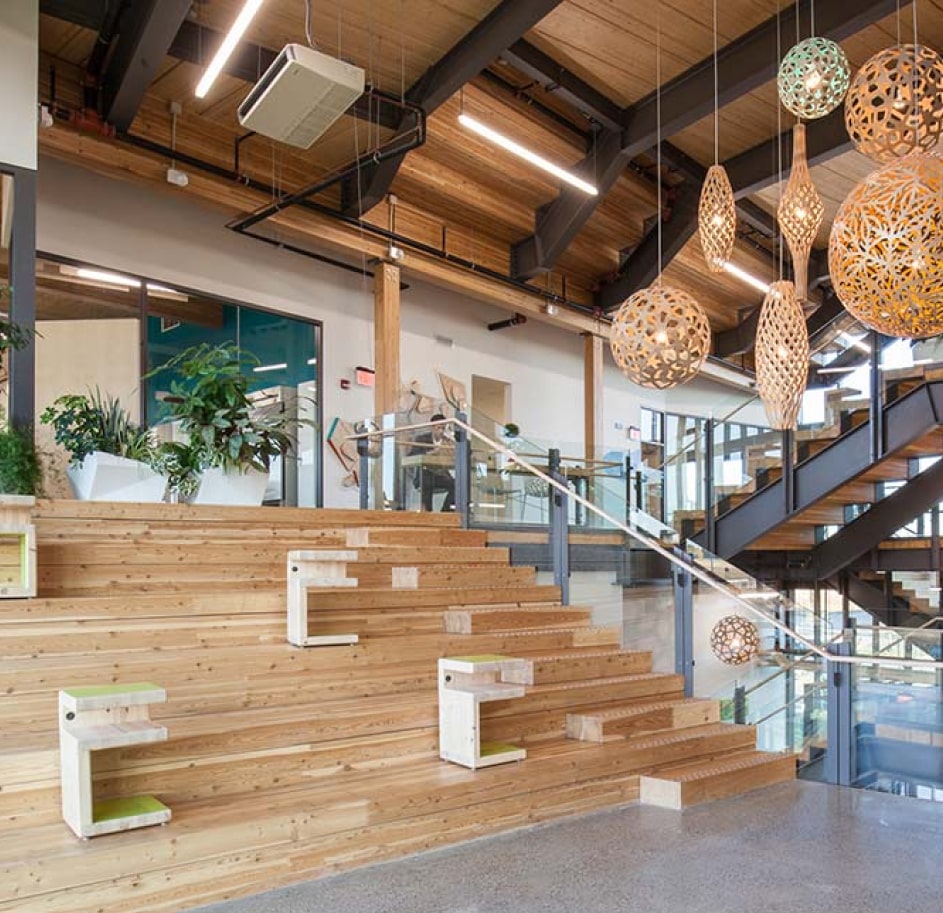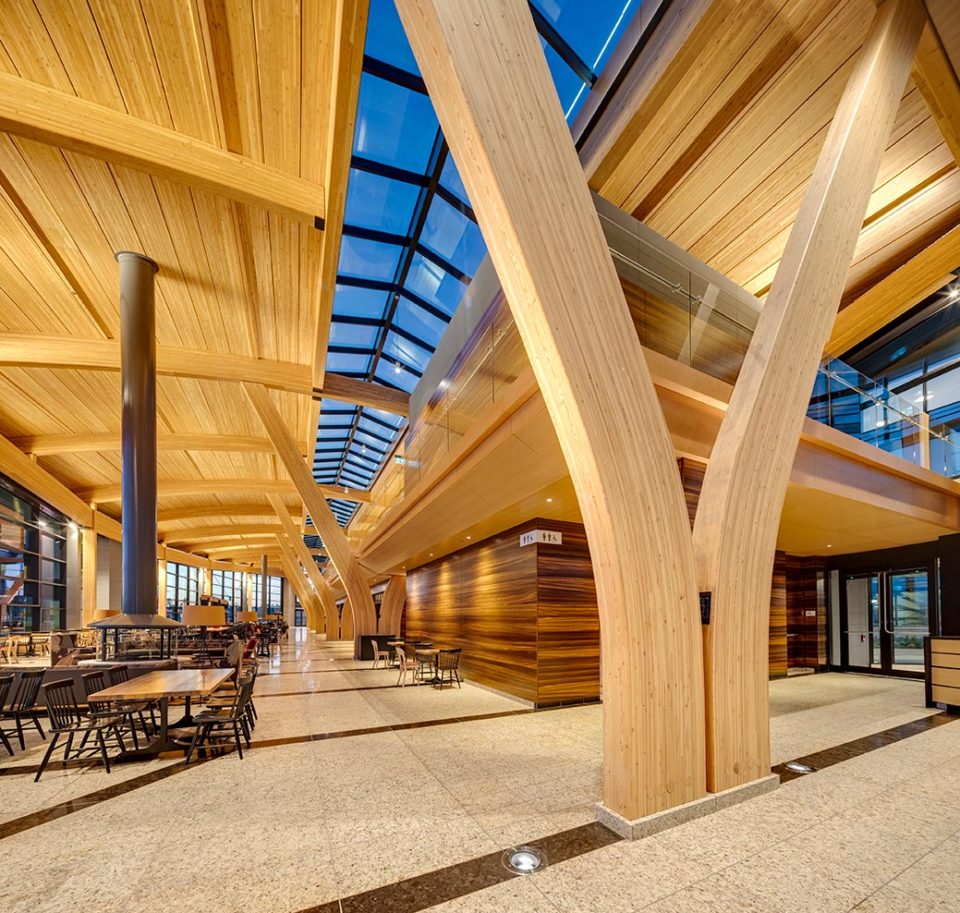
Alberta Forest Products
Alberta’s trees are exceptionally strong, and the fibres in the wood are longer than average. That makes Alberta a key producer of high-quality forest products.
Forest products made in Alberta include:
- Lumber
- Plywood
- Pulp (used for paper products, packaging, and industrial, and medical materials)
- Wood pellets
- Newsprint
- Renewable energy from manufacturing by-products (e.g., black liquor used to produce electricity)
- Glue Laminated Lumber (Glulam)
- Laminated Veneer Lumber (LVL)
- Medium Density Fiberboard (MDF)
- Oriented Strand Board (OSB)
Forest products also show up in places you might not expect. In addition to paper, pulp is used to make HDTV screens. Cosmetics, diapers, and other everyday consumer goods use ingredients from trees, too. And with the material that’s left over from producing pulp, lumber and other primary products, we can create carbon neutral energy, fertilizer, and renewable components for other kinds of manufacturing, such as wood pellets for barbecues.

Building With Wood
After hundreds of years of technological advancement, simple 2×4’s are still what we use to frame our houses. Some of Alberta’s most beautiful buildings and structures take that further, using wood as the primary material for construction and decoration.
There’s a good reason for wood’s enduring popularity – wood is one of the most effective building materials there is, and it comes with a host of benefits that are more important now than ever.
Wood is exceptionally strong, making it a great choice for heavy-duty, load-bearing construction applications. It’s also flexible and resilient against extreme weather, and engineered wood withstands fire better than most other building materials.
The environmental cost of producing wood is much lower than materials like steel and concrete, meaning that using more wood in buildings reduces our carbon footprint and other impacts. When trees burn or decay, the carbon they’ve absorbed is released into the atmosphere, but lumber and other wood building materials keep that carbon locked away instead. Wood is also recyclable – if a structure building is torn down, the wood can be reclaimed and refurbished to build something new.
Many iconic buildings in Alberta feature wood prominently. Timber is excellent for framing, due to its strength and versatility, but wood also brings warmth and beauty to a space – it’s the kind of building material you don’t have to hide behind something else at the end of construction. Exposed timber beams in vaulted ceilings, stunning wood accent walls, architectural features like balconies and pillars, and other lovely details in Alberta’s architecture show wood to its natural advantage.
Biophilic design – an approach that incorporates natural elements like wood in built environments – is a growing trend in architecture that has significant environmental and health benefits. The connection to nature people feel in these buildings creates a powerful sense of wellbeing. Spaces that incorporate wood and other natural materials in their design have been shown to decrease pain and painkiller use during surgical recovery, for example, in addition to making buildings more environmentally friendly.

Getting To Zero Waste
We don’t take trees lightly in Alberta. In addition to the careful strategic planning that goes into harvesting timber, we’re conscientious about how we use them once they get to the mill – lumber and paper may be the best known forest products, but they’re not the only ones.
The forest industry takes care to use the whole tree, even the parts that can’t be used to make the kind of forest products most people know. Producing wood pellets that generate carbon-neutral energy, agricultural fertilizer for farmers, and mulch for gardens are a few examples of the way our industry converts “leftover” parts of trees into useful, valuable products instead of letting them go to waste. When you see these products, we haven’t harvested additional trees to make them – they’re the result of our industry’s commitment to avoiding waste.

Wood WORKS! is a national campaign led by the Canadian Wood Council to promote the use of wood in commercial, industrial and institutional construction. Visit them for more information on sustainability benefits, wood construction, and new technologies that enable creative uses of wood in infrastructure.
Learn more about wood construction and building materials.
WOOD-WORKS.ca